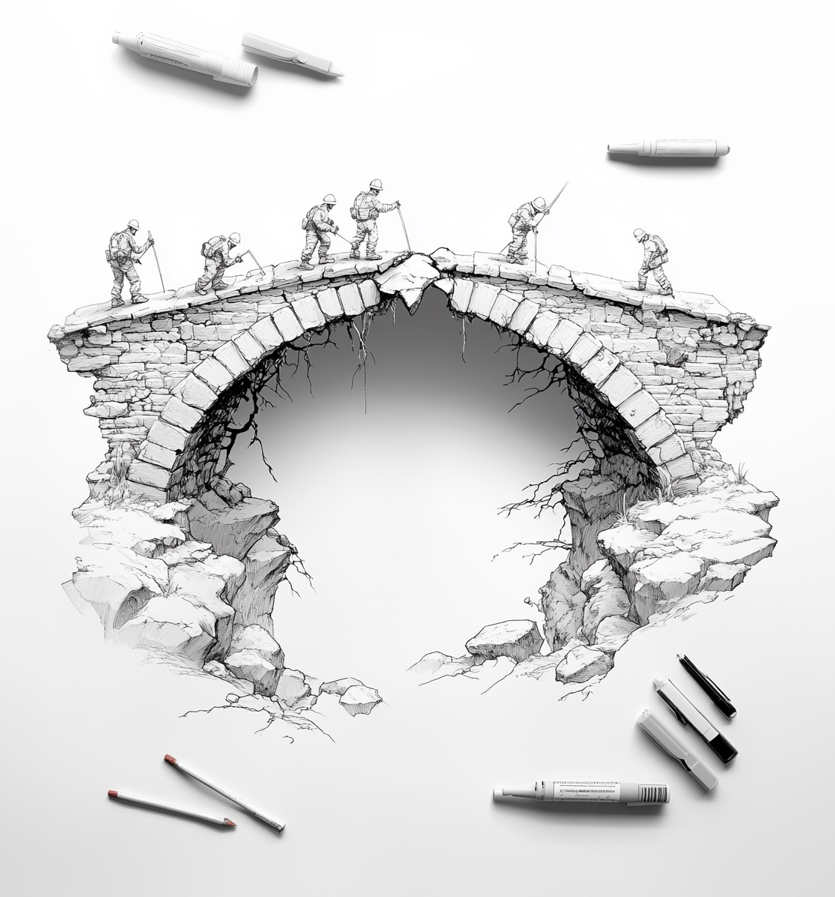The Quality Illusion: Why Testing Can’t Save Your Product
(And Why You Should Stop Trying to Fix Quality at the Finish Line)
Let’s start with an uncomfortable truth: You can’t test the quality into a product. You just can’t. It’s like trying to build a house by slapping on fresh paint at the last moment, hoping no one notices the foundation is made of matchsticks.
Yet, organizations continue to pour millions into testing, inspection, and post-production quality control as if these activities will somehow transmute a flawed product into a perfect one. Spoiler alert: They won’t. At best, testing identifies defects. At worst, it gives a false sense of security while burning time and money.
The real answer? Build quality in from the start. Not as an afterthought, not as a secondary process, but as an intrinsic part of design, development, and production.
The Great Quality Control Myth
Let’s debunk a common industry delusion: the more you test, the higher your quality. That’s like saying the more times you check your car’s gas gauge, the more fuel-efficient your vehicle becomes. Testing is an indicator, not a solution.
W. Edwards Deming, the godfather of modern quality management, put it bluntly: “Inspection does not improve the quality, nor guarantee quality. Inspection is too late. The quality, good or bad, is already in the product.”
Toyota figured this out decades ago. Instead of relying on armies of inspectors to catch defects, they built quality into the process. Their philosophy—Jidoka (automation with a human touch)—means the system itself detects and prevents errors before they ever become defects.
Why Testing as a Safety Net Fails
Imagine you’re coaching a ski team. Would you rather train athletes to navigate the course flawlessly, or just have paramedics at every turn, ready to deal with their inevitable wipeouts? Most businesses choose the latter. They rely on testing to catch failures rather than designing processes that prevent them.
Here’s where testing falls apart:
- It’s Too Late – If defects are discovered in testing, that means defective units were already made. The cost of fixing a problem increases exponentially the later it’s found. Juran’s “Cost of Poor Quality” model shows that fixing defects in production costs 10x more than fixing them in development, and up to 100x more once the product is in the customer’s hands.
- It’s Inconsistent – Even with rigorous testing, some defects will slip through. Sampling isn’t foolproof. If your defect rate is 0.1% and you ship a million units, congratulations, you’ve just sent 1,000 defective products to customers.
- It Creates a Blame Culture – Testing-centric approaches lead to “over-the-wall” thinking. Designers blame engineers, engineers blame manufacturing, and manufacturing blames testing. Nobody takes ownership of quality because, well, “That’s QA’s problem.”
Building Quality In: Where It Actually Starts
So, if testing isn’t the answer, what is? Quality by design. The world’s best manufacturers—from Toyota to Apple—have figured this out. They follow a few key principles:
1. Zero Defects is a Design Principle, Not a Fantasy
Philip Crosby’s Quality is Free made an argument that still rattles some executives today: it’s cheaper to build quality in than to fix defects later. His Zero Defects concept isn’t about perfectionism—it’s about eliminating errors at the source.
Case in point: Shigeo Shingo’s Poka-Yoke (mistake-proofing) system at Toyota. Instead of relying on workers to avoid errors, the system itself prevents mistakes from happening in the first place. Think of the sensors in your car that stop you from driving away with your fuel cap open. That’s Poka-Yoke.
2. Prevention Trumps Inspection
The best quality control? One that makes defects impossible. Look at Six Sigma, which aims for just 3.4 defects per million opportunities. But that level of excellence only happens when defect prevention is embedded into every process, not just caught at the end.
In software development, this means shifting left—finding and fixing defects in the design phase rather than in testing. In manufacturing, it means adopting Lean principles to build error-proof processes from the start.
3. Cross-Functional Quality Ownership
Quality isn’t the job of a single department. It belongs to everyone. Toyota’s Quality Circles bring together frontline workers, engineers, and managers to improve processes proactively.
At Amazon, every software engineer is responsible for the quality of their own code—there’s no separate QA department to clean up their mess.
Who Actually Benefits from Late-Stage Testing?
The biggest irony? The obsession with testing doesn’t actually benefit end-users. It benefits executives who want easy metrics.
- A massive testing operation creates the illusion of control.
- High defect detection rates look impressive on reports.
- Delays caused by quality issues can be spun into narratives about “rigorous standards.”
But customers don’t care about how many defects you found—they care about how many you delivered.
The Blueprint for Real Quality
So, what does building quality in actually look like in digital product management?
- Management: Quality must be a strategic goal, not an operational afterthought.
- Innovation: Invest in better processes, not just better tests.
- Experience: User feedback should drive design, preventing usability defects before they exist.
- Quality: Focus on prevention, not detection.
- Engineering: Automate quality controls within the process itself.
- Architecture: Design systems for resilience, not just for compliance.
The Closing Thought: Quality is a Bridge, Not a Fence
If testing is a safety net, then designing for quality is a bridge—a well-engineered, reliable structure that doesn’t need a net because failure isn’t an option.
So, next time someone argues that more testing is the answer, remind them: skiers don’t become champions by falling less. They win by skiing better.


